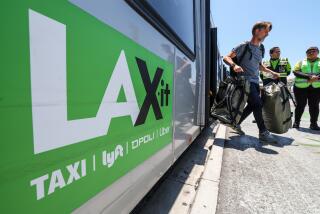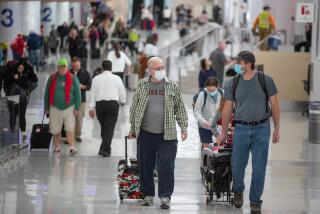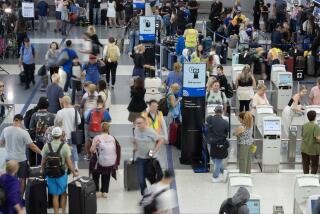Taxiing Radar Broken for 7 Months at LAX
The aging radar system used to control taxiing planes when visibility is poor at Los Angeles International Airport was out of service for seven months this year because replacement parts were no longer being manufactured, a federal official said Friday.
James Holtsclaw, the Federal Aviation Administration’s air traffic manager at LAX, said controllers had to rely instead on position reports radioed by pilots during the period that the 12-year-old airport surveillance detection equipment was inoperable.
“It had no effect on safety, but it did increase delays, probably 25% to 30%, when visibility was a half-mile or less,” Holtsclaw said. “Our controllers are professionals, and that was very frustrating for them.”
He said visibility is probably that low or lower “parts of 30 days in the year.”
The radar system was down from late February until about three weeks ago. There were no accidents on the ground during that period, although at least two aircraft wandered onto taxiways without clearance.
Holtsclaw said the system in use at LAX is made in this country only by Texas Instruments.
“When we went back to the manufacturer . . . they were out of spare parts,” he said. “They had to go into their archives, find the specifications and build us some new parts. That takes time.”
Holtsclaw said the Texas Instruments system will remain in use--baring further breakdowns requiring the manufacture of parts--until about 1990, when a new system is scheduled for installation on a new control tower.
The new tower will be about 80 feet taller than the present one and will eliminate a “shadow” created when the Tom Bradley International Terminal was built before the 1984 Olympics. Because of this shadow, the current system cannot detect planes on the north-south taxiway between the two main runways at LAX.
More to Read
Inside the business of entertainment
The Wide Shot brings you news, analysis and insights on everything from streaming wars to production — and what it all means for the future.
You may occasionally receive promotional content from the Los Angeles Times.










